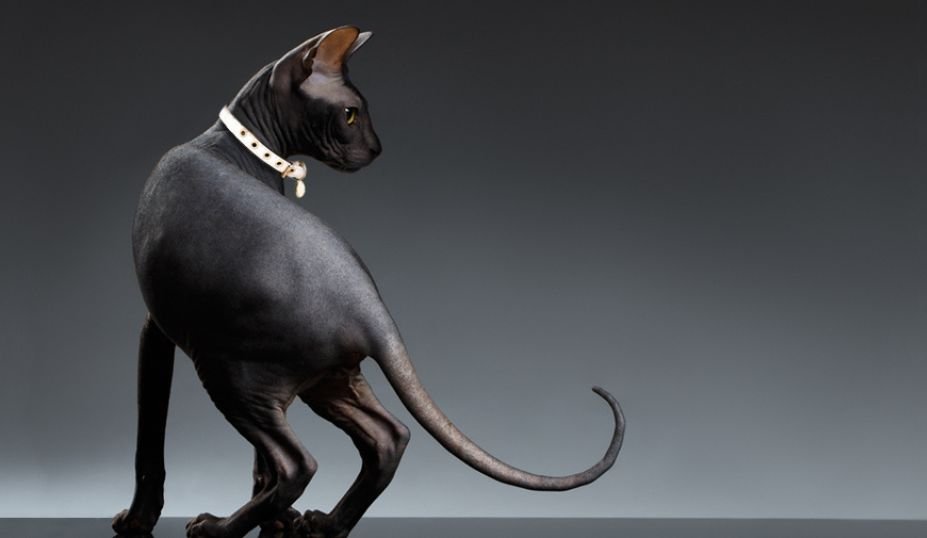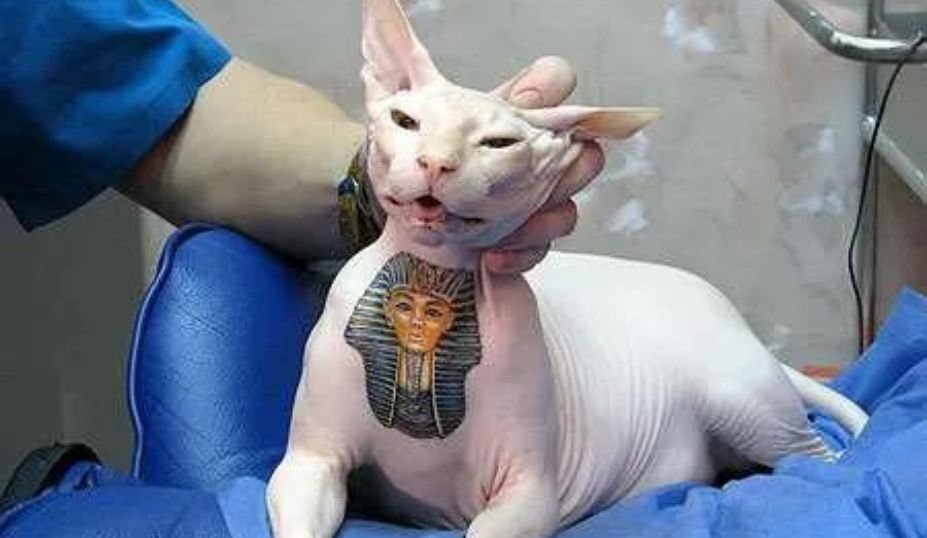A Comprehensive Guide to the Egyptian Sphynx Cat
A Comprehensive Guide to the Egyptian Sphynx Cat
The Egyptian Sphynx cat, a breed shrouded in an aura of ancient mystique, stands out in the feline world with its strikingly bare appearance and warm, wrinkled skin. This breed, often associated with the grandeur of pharaonic Egypt, captivates enthusiasts not only with its unique aesthetic but also with its rich historical significance.
Despite common misconceptions, the modern Sphynx's lineage does not trace directly back to the cats of the pharaohs; rather, it is the result of selective breeding in the 20th century, aimed at cultivating its distinctive hairless trait. Today, the Egyptian Sphynx cat continues to enchant with its dog-like personality, intense gaze, and a physique that sets it apart from its fur-clad counterparts, making it a living piece of art and a testament to the diversity within the domestic cat species.
Origins and History
The Egyptian Sphynx cat, despite its name, does not trace its roots directly back to the ancient civilization of Egypt. Instead, its origins are a fascinating blend of natural occurrence and human intervention. The cats revered in ancient Egypt were indeed often depicted as sphynxes, but contrary to popular belief, these were not hairless.
They had short, fine fur and were considered sacred, often featuring in sculptures and paintings. The modern Sphynx cat, known for its distinctive lack of fur, is actually a product of selective breeding in the 20th century. The journey of this breed began in 1966 in Toronto, Ontario, with the birth of a hairless male kitten named Prune.
Prune's unique appearance sparked interest, and a breeding program was initiated to replicate his hairless trait. This program was led by science graduate Ridyadh Bawa, his mother Yania, a longtime Siamese breeder, and Keese and Rita Tenhoves.
Around the same time, hairless kittens were also discovered among barn cats in Minnesota. These kittens, named Epidermis and Dermis, were sold to an Oregon breeder and became an integral part of the Sphynx breeding program.
Through these combined efforts, the breed we now know as the Egyptian Sphynx cat was developed. It's a breed that captivates with its unique aesthetic, harking back to the ancient sphynxes of Egypt, while being a testament to the power of selective breeding in shaping the diversity of the domestic cat species.
Physical Characteristics

The Egyptian Sphynx cat is a marvel of the feline world, boasting a unique set of physical characteristics that set it apart from other breeds. The most striking feature of the Sphynx cat is its lack of fur. Instead of a traditional coat, the Sphynx cat's skin can display a variety of colors and patterns, much like the coats of other cat breeds. This skin often has a warm, wrinkled texture, giving the Sphynx an appearance reminiscent of ancient Egyptian statues.
Despite being hairless, the Sphynx cat is not always completely bald. Some may have a "peach-fuzz" coating of hair that is no over 1/8-inch in length, typically found on the bridge of their nose and the backs of their ears. Whiskers may be present, either whole or broken, or may be totally absent.
The Sphynx cat's body is muscular and sturdy, with a density and heaviness that can be surprising given its medium size. This breed is characterized by its large, bat-like ears and striking almond-shaped eyes, which can come in various colors. The Sphynx also has quite long legs and a slender tail, adding to its distinctive silhouette.
The physical characteristics of the Egyptian Sphynx cat are not just aesthetically pleasing but also a testament to the breed's unique genetic makeup. This breed's distinctive appearance, combined with its playful and affectionate nature, makes it a captivating choice for cat enthusiasts around the world.
Temperament and Personality
The Egyptian Sphynx cat is renowned for its vibrant personality and sociable nature, making it a delightful companion for those who appreciate its unique charm. These cats are extroverted, energetic, and highly intelligent, often displaying a level of curiosity that keeps their owners entertained.
Sphynx cats are known for their outgoing nature and are not shy about communicating their needs. They are extremely energetic and will want to play with you all the time, often running around the house in pursuit of toys or their human companions.
Their playful, energetic, and loyal nature has led many to describe them as part dog, part cat. Despite their distinctive, almost alien-like appearance, Sphynx cats are among the friendliest and most loving of feline breeds.
They are people-oriented and seek to impress and snuggle up to their humans. Contrary to what some might assume, the Sphynx cat is not shy or wary of humans. In fact, getting to know a Sphynx can completely change the way you view these felines.
The Sphynx cat's personality is often described as being almost dog-like in its loyalty and desire to be involved in whatever their human is doing. They are known to follow their owners around the house, seizing any opportunity to perch on a shoulder or curl up in a lap. As curious and intelligent as they are energetic, these traits can make them a bit of a handful, but also an endlessly entertaining companion.
Care and Maintenance

Caring for an Egyptian Sphynx cat requires a unique approach due to its distinctive physical characteristics and health considerations. Despite their lack of fur, Sphynx cats are not low-maintenance pets. They require regular grooming, including frequent baths, to remove the oils that their skin produces.
Unlike cats with fur, a Sphynx cannot absorb body oils on their hairless skin, which can lead to a build-up of oils and debris. Bathing should generally be done once a week, and it is important to start this routine when the cat is young so that it becomes accustomed to the process.
In addition to bathing, Sphynx cats also require regular ear cleaning to prevent a build-up of earwax and potential infections. Their nails and the surrounding skin folds also need to be cleaned properly to prevent the accumulation of oils and debris. When it comes to diet, while it can help control a Sphynx cat's overall greasiness, they will occasionally need baths to remove accumulated dirt and grime.
It's also important to note that Sphynx cats are prone to certain health issues. They can develop genetic health problems such as hypertrophic cardiomyopathy, a problem in which the heart muscle gets abnormally thick. Regular screenings for heart issues are recommended. Sphynx cats are also predisposed to dental issues, requiring regular dental cleanings.
Interaction and Bonding
Interacting with a Sphynx cat and building a strong bond with this captivating breed involves understanding and embracing their unique communication style and social needs. Sphynx cats are known for their extroverted and affectionate nature, thriving on attention and interaction with their human companions.
To foster a deep connection with a Sphynx cat, it is essential to engage in regular playtime. These cats are highly energetic and intelligent, requiring mental stimulation through interactive toys and games. They love to chase, pounce, and explore, so providing several toys will keep them entertained and close to you.
Sphynx cats also enjoy being part of the family and will often seek out human company. They are not the type to hide away; instead, they prefer to be in the thick of things, whether that's helping you with your daily tasks or snuggling up for a movie night.
Embrace their sociable nature by including them in your activities and offering plenty of cuddles and lap time.Communication with a Sphynx cat is not just about responding to their needs but also about understanding their body language and vocalizations. They may not be shy about voicing their opinions or desires, so be attentive to their meows and physical cues.
Responding to their communication will strengthen your bond and help you understand their unique personality. Regular grooming sessions can also be a bonding experience for you and your Sphynx cat. Since they require frequent baths and ear cleanings, use this time to gently handle and pamper your cat, turning a necessary task into an opportunity for affection and trust-building.
FAQs
Why are they called "sphynx" cats?
Despite the common misconception that the Sphynx cat originated in Egypt, the breed actually has no direct connection to Egyptian history or the "Sphinx" myth. The breed was named after the famous cat-like statue in Egypt due to its distinctive, almost mythical appearance. The modern-day Sphynx cats actually originated in Canada.
What are the common health issues in Sphynx cats?Sphynx cats can be prone to several health issues including skin problems due to the accumulation of excess oils on their hairless skin, body temperature regulation issues, ear infections, periodontal disease, hypertrophic cardiomyopathy (HCM), and hereditary myopathy. Regular veterinary check-ups, a balanced diet, and attentive grooming can help manage these issues.
Conclusion
The Egyptian Sphynx cat, with its distinctive appearance and vibrant personality, is a unique addition to any home. This breed offers a blend of joys and challenges that make owning a Sphynx cat a truly unique experience.
Their extroverted nature, playful energy, and affectionate demeanor make them delightful companions, while their intelligence and curiosity provide endless entertainment. However, owning a Sphynx cat also comes with its share of responsibilities. Their lack of fur requires regular grooming, including frequent baths and ear cleanings, to keep their skin healthy.
They also need a balanced diet and consistent veterinary check-ups to monitor for common health issues such as skin problems, heart conditions, and dental disease.
Despite these challenges, the rewards of having a Sphynx cat are plentiful. Their sociability and desire for companionship make them a great addition to families and households of all sizes. They form close bonds with their owners and are known to get along well with other pets.









Comments